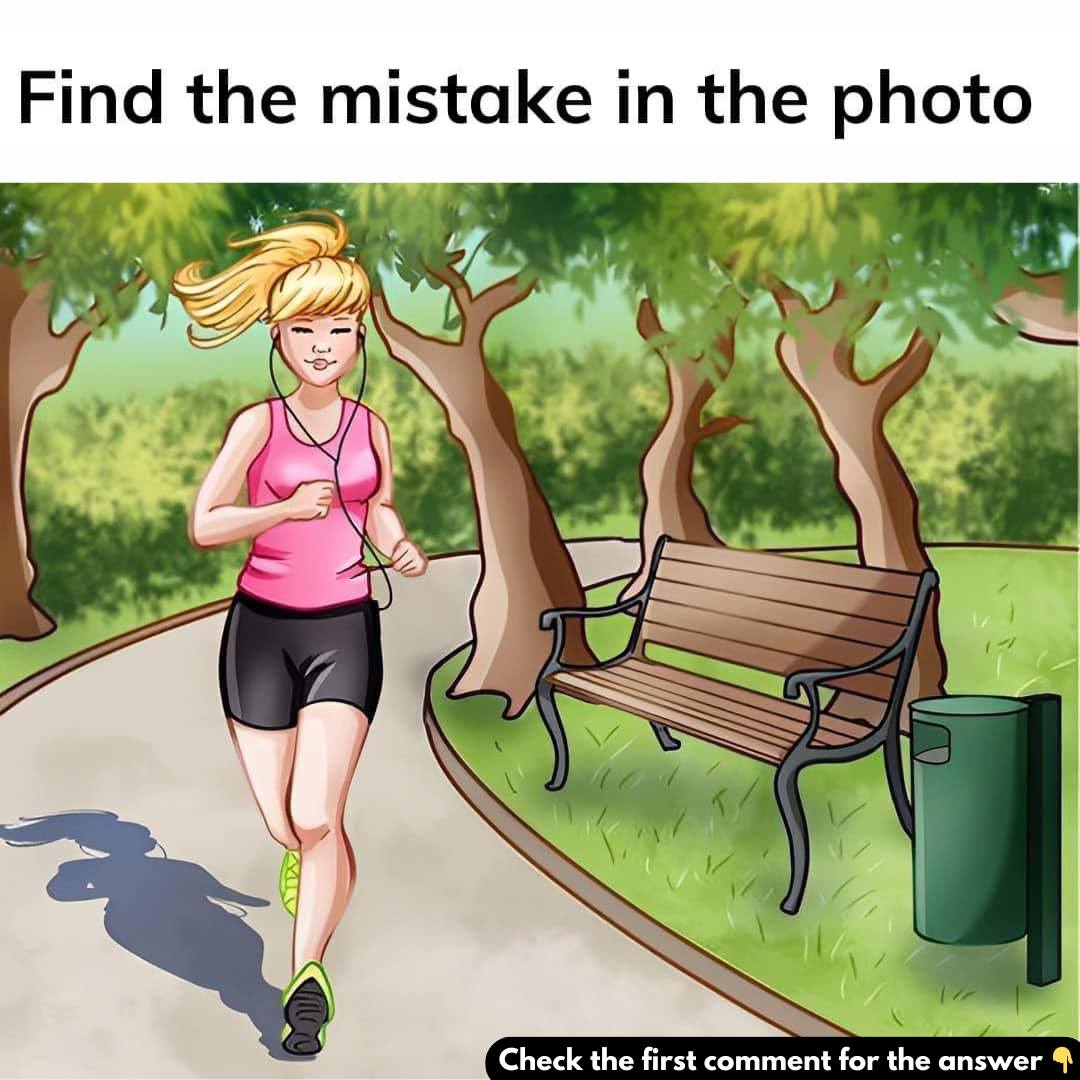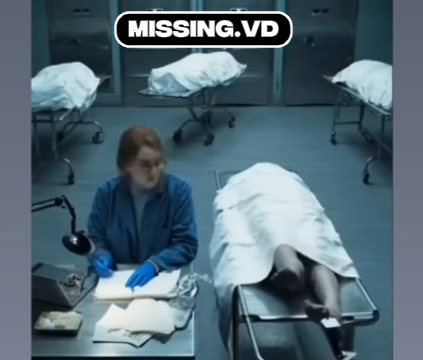Take a good look at the image of the girl running through the park. At first glance, everything seems completely normal—a bright sunny day, a peaceful park scene, and a jogger enjoying her run through the pathway. But hidden within this seemingly ordinary picture is a subtle mistake that challenges the way our minds perceive everyday scenes. It’s the kind of puzzle that seems easy until you actually try to solve it.

So, what’s wrong with the image? The answer isn’t obvious at first, and that’s what makes it such a great mental challenge. Puzzles like this one play tricks on our brains because of how we naturally interpret visual information. Our minds are designed to take shortcuts. We’re wired to see the bigger picture first—literally. We tend to focus on the main elements, like the jogger or the bright sunlight, and we overlook smaller inconsistencies. That’s part of the brain’s efficiency, but it can also be why we miss crucial details.
In this case, your attention probably went straight to the woman running, the trees in the background, the trash can, or the bench nearby. Maybe you even admired how realistic the lighting looked. But did you notice the shadows? That’s where things get interesting. Let’s break it down step by step to help you spot the mistake. First, observe the scene as a whole. Everything looks believable—a jogger in motion, trees standing tall, a bench for resting, and a trash bin for park-goers. The sun appears to be shining from the left side, casting a warm glow.
Now, zoom in on the individual elements, starting with the runner. Her shadow is clearly visible and aligns perfectly with the direction of the sunlight. That’s exactly what you would expect. However, as your eyes scan the rest of the image, something feels off. The bench, trees, and trash bin—none of them cast shadows. That’s the mistake. In real life, any solid object under direct sunlight will cast a shadow. It’s a basic law of light and physics.
Yet here, the inanimate objects are completely shadowless, which breaks the illusion of realism in the photo. The inconsistency may be subtle, but once you see it, it’s impossible to ignore. The presence of a shadow for the moving subject but not for the stationary ones creates an unrealistic and somewhat unsettling visual experience. So, why is it so easy to miss this at first? The answer lies in how our brains process information. We assume that everyday scenes will follow the rules of reality, and we don’t question things that look familiar. We also tend to focus on people or movement in an image rather than on the still objects. This means our brains often gloss over important visual clues, especially when we think we already understand the scene. That’s what makes puzzles like this so enjoyable—and beneficial. Observation challenges train your brain to slow down, question what seems obvious, and sharpen your attention to detail. They push you to think critically and notice the subtle differences that can reveal a hidden flaw. Plus, they’re just plain fun. Solving these kinds of puzzles helps improve concentration, patience, and cognitive flexibility. You learn to trust your instincts while also checking your assumptions. So, were you able to find the mistake on your own, or did it take a little extra time? Maybe you noticed something else that looked unusual. Either way, there’s no right or wrong way to approach these puzzles. Everyone sees things differently, and that’s what makes it exciting to compare observations and perspectives. If this challenge sparked your curiosity, why stop here? There are tons of other puzzles, brain teasers, and optical illusions out there just waiting to test your mind. The more you engage with them, the sharper your observational skills become. And next time, you might just catch the mistake right away. In the end, the hidden flaw in the picture of the girl running reminds us of an important lesson: sometimes, the smallest details hold the biggest clues. By learning to look a little closer and think a little deeper, we can discover hidden truths in even the most ordinary places.





